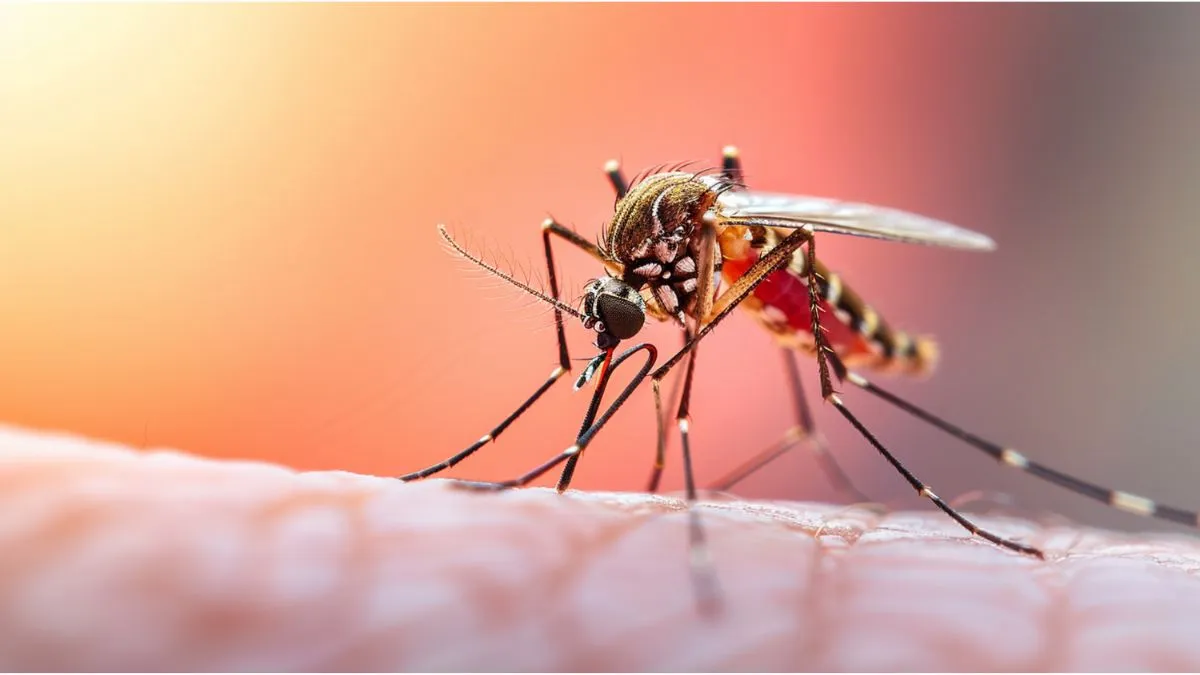
Nets, insecticides and drones - China went all the way this year to fight the mosquito-borne chikungunya virus, which infected thousands of people in the country. Now, according to a new study, India may also have to gear up to fight against the virus. It stated that India could face the world’s highest long-term burden of chikungunya. Before we get into the details, let us take a look at what chikungunya virus is, what are its symptoms and more.
Table of Content:-
To get a clear picture of why India could be at risk for chikungunya and what it means for the public healthcare system, we get in touch with Dr Tushar Tayal, Associate Director, Internal Medicine, CK Birla Hospital, Gurugram. Read on.
What is Chikungunya Virus?
Chikungunya is a viral disease spread by Aedes mosquitoes — the same type that carries dengue. It causes sudden high fever, severe joint pain, muscle ache, headache, and rashes. Although it rarely causes death, it can lead to long-term health problems and disability for many people.
Outbreaks of chikungunya have occurred in Africa, USA, Asia, Europe, and islands in the Indian and Pacific Oceans. There is a risk of the virus spreading to unaffected areas by infected travelers.
Symptoms of Chikungunya
In symptomatic patients, chikungunya disease onset is generally around 4–8 days (range 2–12 days) after the infected mosquito bites. This is characterized by sudden fever, mostly accompanied by severe joint pain. The joint pain lasts for a few days. But in some cases, they may last for weeks, months or even years.
Other common signs and symptoms of chikungunya include:
- Joint swelling
- Muscle pain
- Headache
- Nausea
- Fatigue
- Rash
All these symptoms are similar to those of dengue and Zika viruses. This poses a risk that chikungunya can be misdiagnosed.
Why India Faces Long-term Risk From Chikungunya
Recently, one of the most detailed global mappings of chikungunya has been released. The study, titled Global, regional and national burden of chikungunya: force of infection mapping and spatial modelling study, has been published in BMJ Global Health. According to the findings, India could face the world’s highest long-term burden of chikungunya with millions at risk of infection and chronic disability each year. The study used machine learning models to predict that over 5 million Indians may be affected with chikungunya annually.
“India’s warm and humid climate, dense population, rapid urbanisation, and poor waste and water management make it an ideal environment for mosquitoes to thrive. With changing weather patterns and frequent rainfall, the risk of large outbreaks is increasing across many states,” says Dr Tayal.
How will this affect India’s healthcare system? The expert answers this for us.
Dr Tayal explains, “For India’s public health system, this poses a serious challenge. Hospitals and clinics already struggle during dengue and malaria seasons — and chikungunya outbreaks could add more pressure, especially as cases can cause prolonged illness. According to experts, more than half of chikungunya’s total health burden comes from its long-term effects, not just the initial fever.”
Expert Tips To Prevent Chikungunya
“Chikungunya may not be fatal, but its long-term health effects can be life-changing. Preventing mosquito bites and eliminating breeding sites remain India’s strongest defence against the virus,” advices Dr Tayal.
On this note, he shares some basic tips to stay safe:
- Use mosquito repellents and wear full-sleeved clothes.
- Keep surroundings clean and dry; don’t let water stagnate.
- Cover water containers and clear blocked drains regularly.
- Use mosquito nets and window screens.
- Support community efforts for fogging and vector control.
Treatment of Chikungunya Virus
The clinical management of chikungunya virus includes addressing fever and joint pain with anti-pyretics and optimal analgesics, drinking plenty of fluids and general rest.
“Currently, there is no specific cure or widely available vaccine for chikungunya, though two vaccines — Ixchiq and Vimkunya — have been approved in some countries and could offer hope in the future. Treatment mainly focuses on rest, hydration, and medicines like paracetamol to relieve pain and fever,” concludes Dr Tayal.
The Final Word
India could face the world’s highest long-term burden of chikungunya, reveals a latest study. There is no specific cure or widely available vaccine for chikungunya at present. Thus, preventing mosquito bites and eliminating breeding sites could be India’s strongest defence against the virus.
Also watch this video
FAQ
Is chikungunya common in India?
Yes, chikungunya is common in India and is considered a major public health concern, with a re-emergence of the disease in 2005 leading to many outbreaks in various states.Which is more painful, dengue or chikungunya?
Swelling and pain is high in Chikungunya as compared to that in Dengue.Is chikungunya virus curable?
No, there is no specific cure for chikungunya, and there is no specific antiviral drug for it.Is death from chikungunya rare?
Yes, death from chikungunya is rare. But the virus can cause severe problems in some people.
Read Next
Research Links Delhi’s Air Pollution To Rising Cases Of Rheumatoid Arthritis; Expert Decodes
How we keep this article up to date:
We work with experts and keep a close eye on the latest in health and wellness. Whenever there is a new research or helpful information, we update our articles with accurate and useful advice.
Current Version
Oct 18, 2025 16:17 IST
Published By : Shruti Das